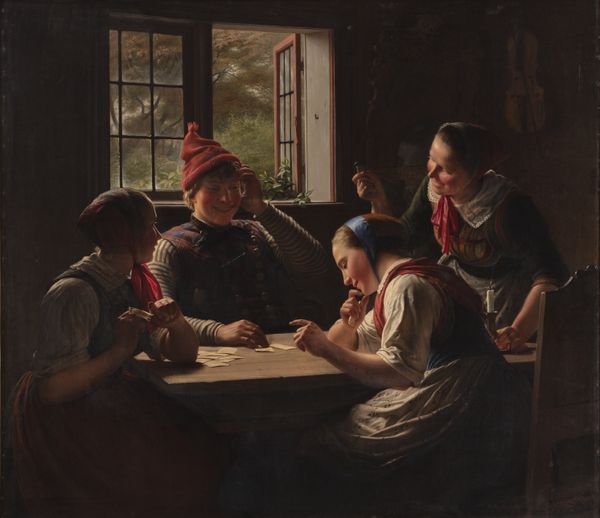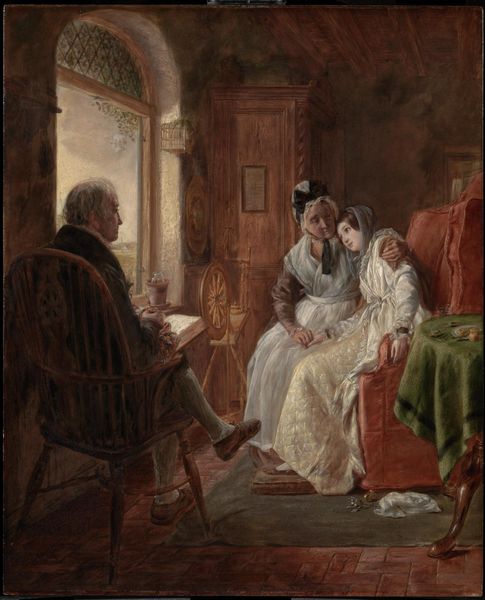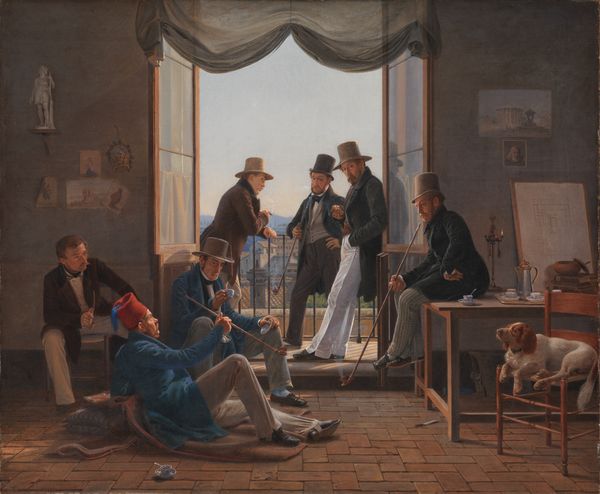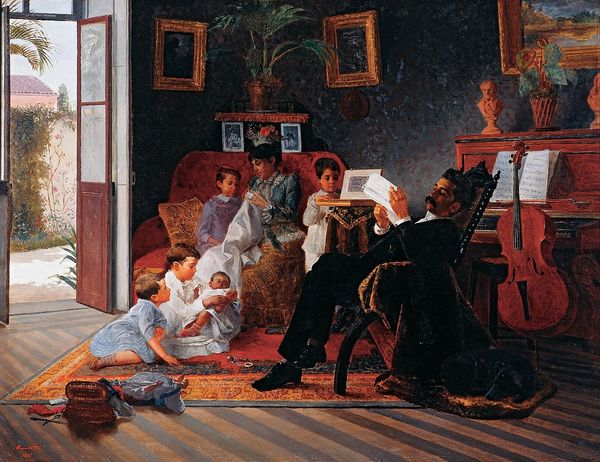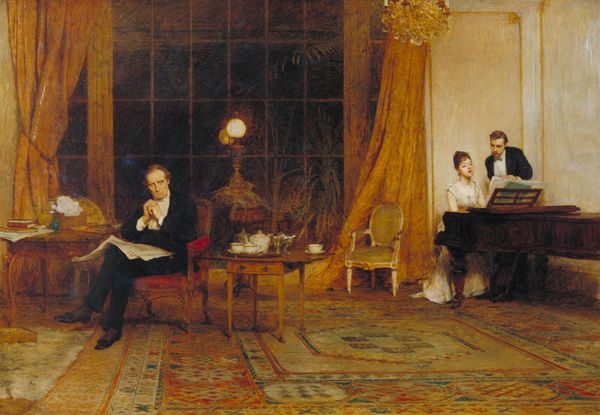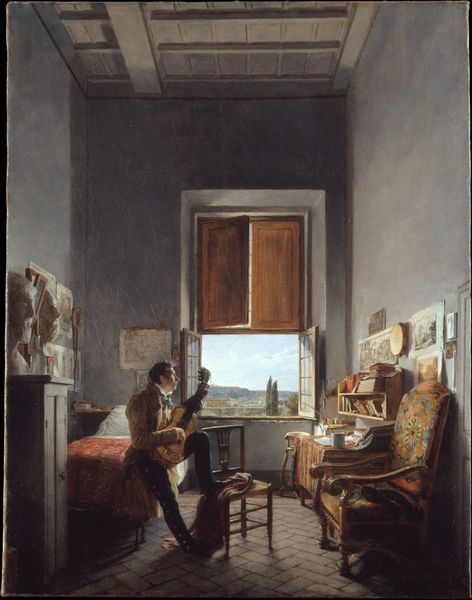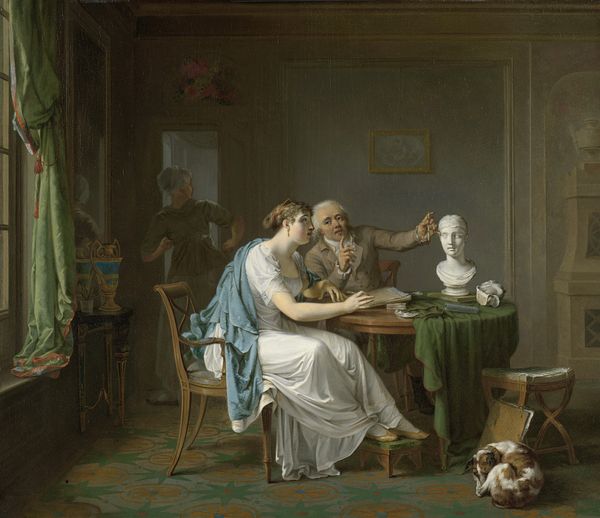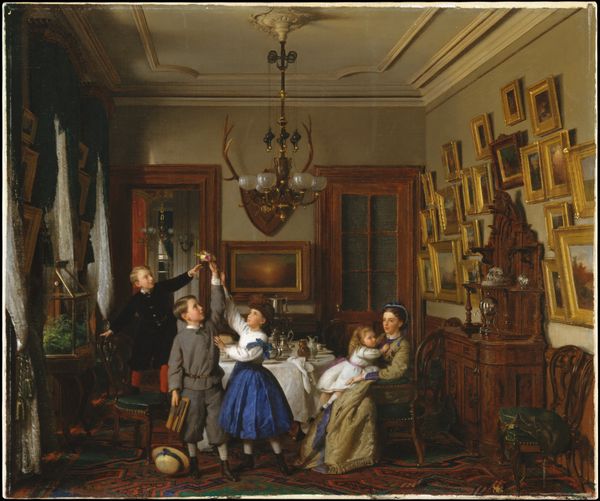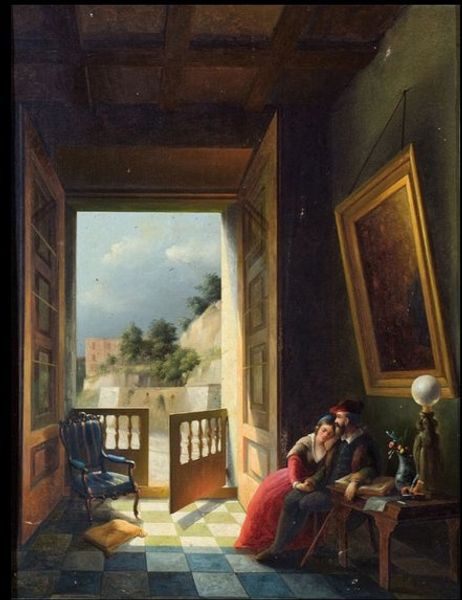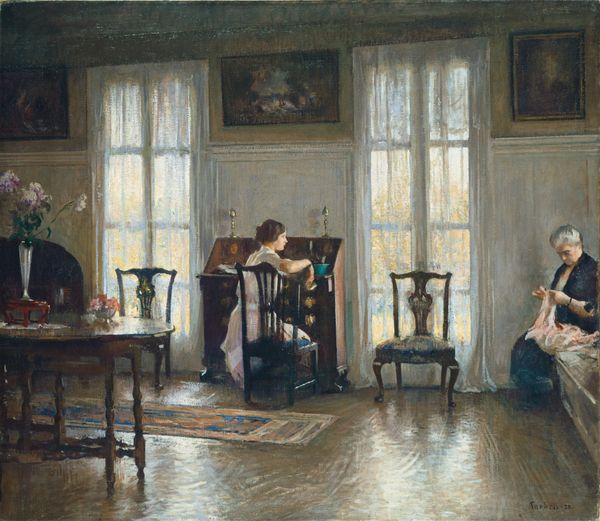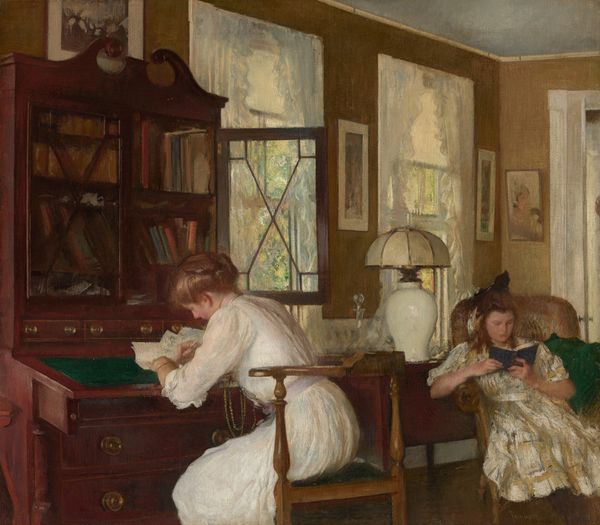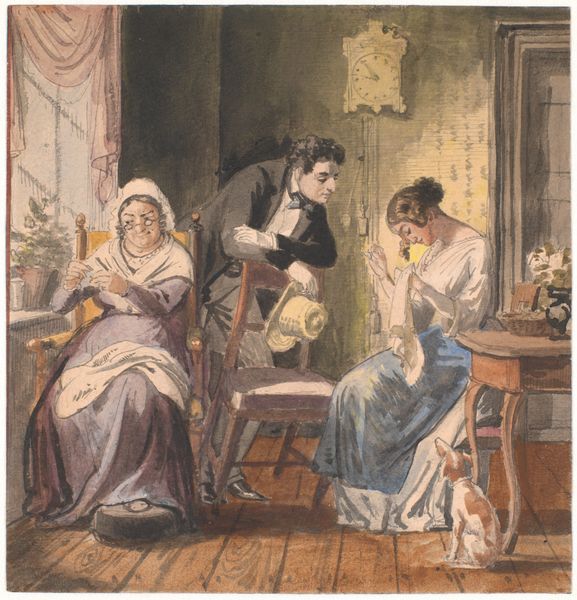
painting, oil-paint
#
portrait
#
painting
#
oil-paint
#
oil painting
#
intimism
#
group-portraits
#
romanticism
#
genre-painting
#
portrait art
Dimensions: 68.4 cm (height) x 59 cm (width) (Netto), 82.7 cm (height) x 72 cm (width) x 9.1 cm (depth) (Brutto)
Emil Ditlev Bærentzen painted this intimate family portrait in the 19th century, capturing a scene of domestic life. Note the spinning wheel, an ancient symbol of fate and domesticity, often associated with the myth of the Fates who spun the thread of life. The spinning wheel appears in various forms across cultures, from classical depictions of Clotho to fairy tales like Sleeping Beauty, where spinning carries both life-giving and perilous connotations. Here, it suggests industry and virtue, yet its whirring motion hints at the relentless passage of time and the weaving of destinies. Consider also the statue overlooking the family, a classical figure representing ideals of beauty and permanence. Yet, like the spinning wheel, it too is caught in time's inexorable flow. It reminds us of our complex relationship with time and memory and of the enduring power of symbols to resonate across generations, embedding deep, subconscious states.
Comments
statensmuseumforkunst almost 2 years ago
⋮
Family was a cornerstone of Danish society during the first decades of the 19th century. The Danish people made a virtue of necessity and found much to recommend a quiet life at home with the family. Thus, family portraits became a very popular genre in the late 1820s. The painter Emilius Bærentzen seems to have been the artist who defined how the subject would be depicted. He shows a family - possibly his parents and sisters - gathered during a quiet moment of the day in their Copenhagen flat. The artist has used the open window to create an excellent depiction of light falling into the living room. His rendition is made particularly sophisticated by the inclusion of the semi-transparent red curtain. The painting clearly reflects the gender roles prevalent at the time. Only the head of the family is comfortably seated as he reads his newspaper. By contrast, the women are all engaged in various useful pursuits.
Join the conversation
Join millions of artists and users on Artera today and experience the ultimate creative platform.
